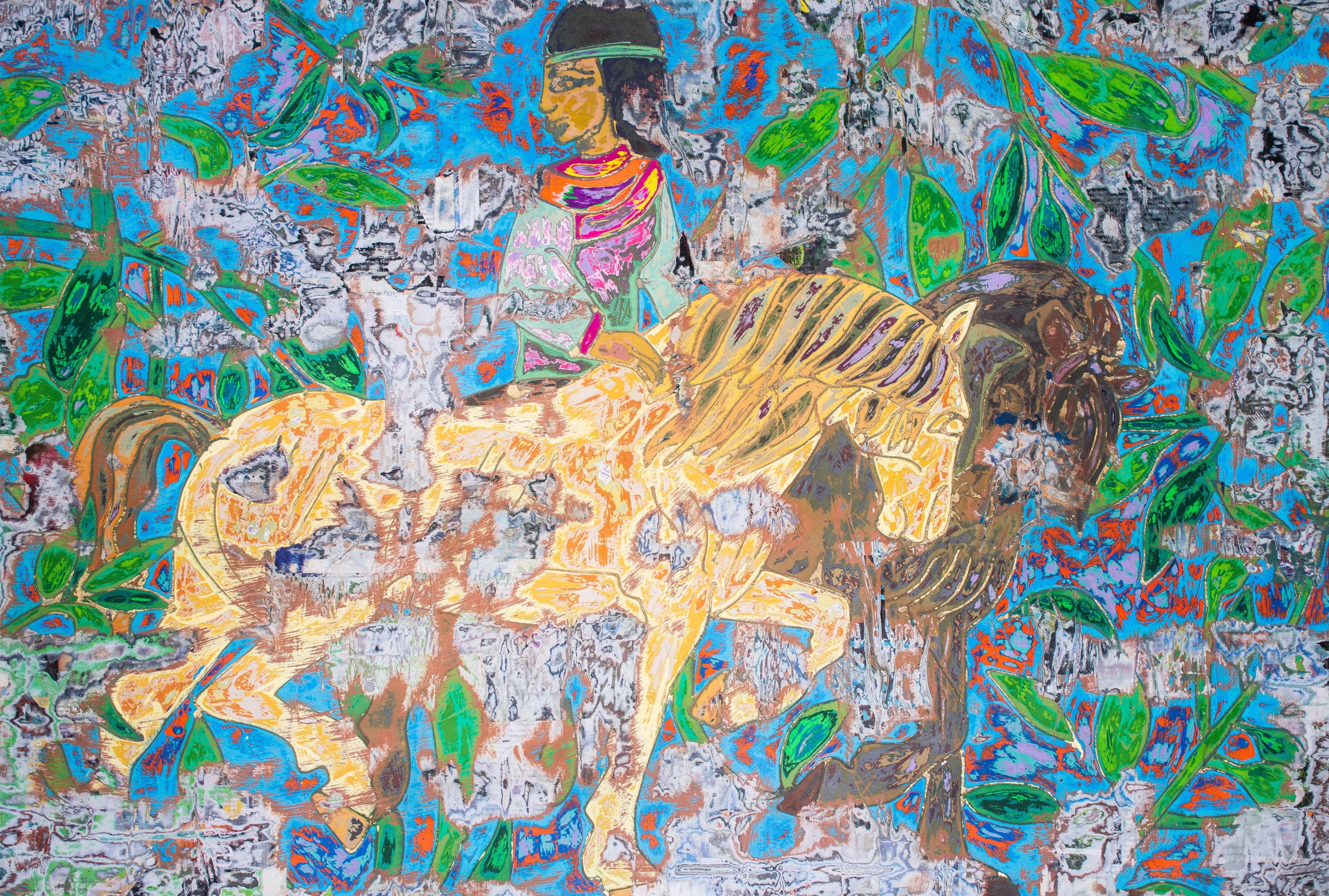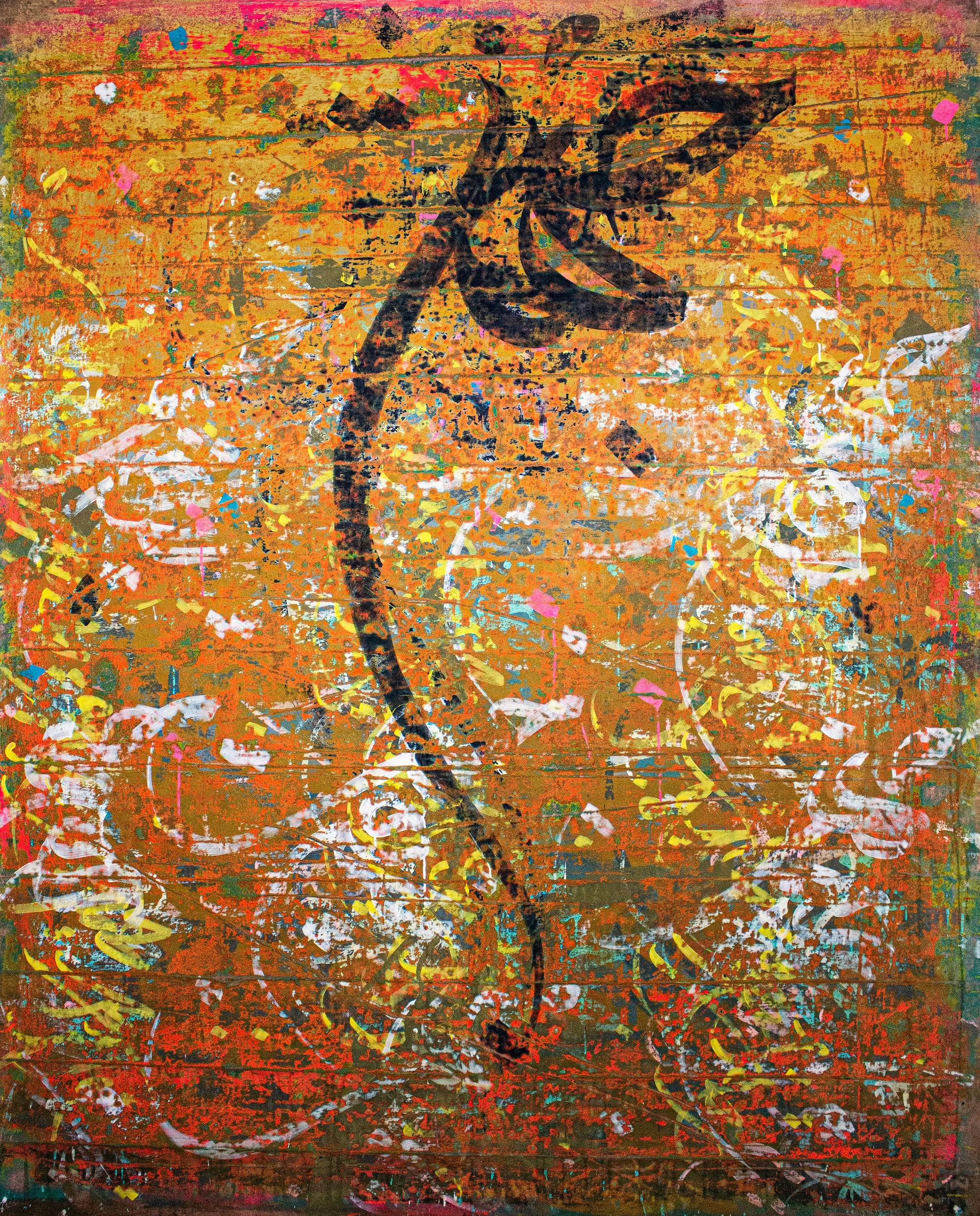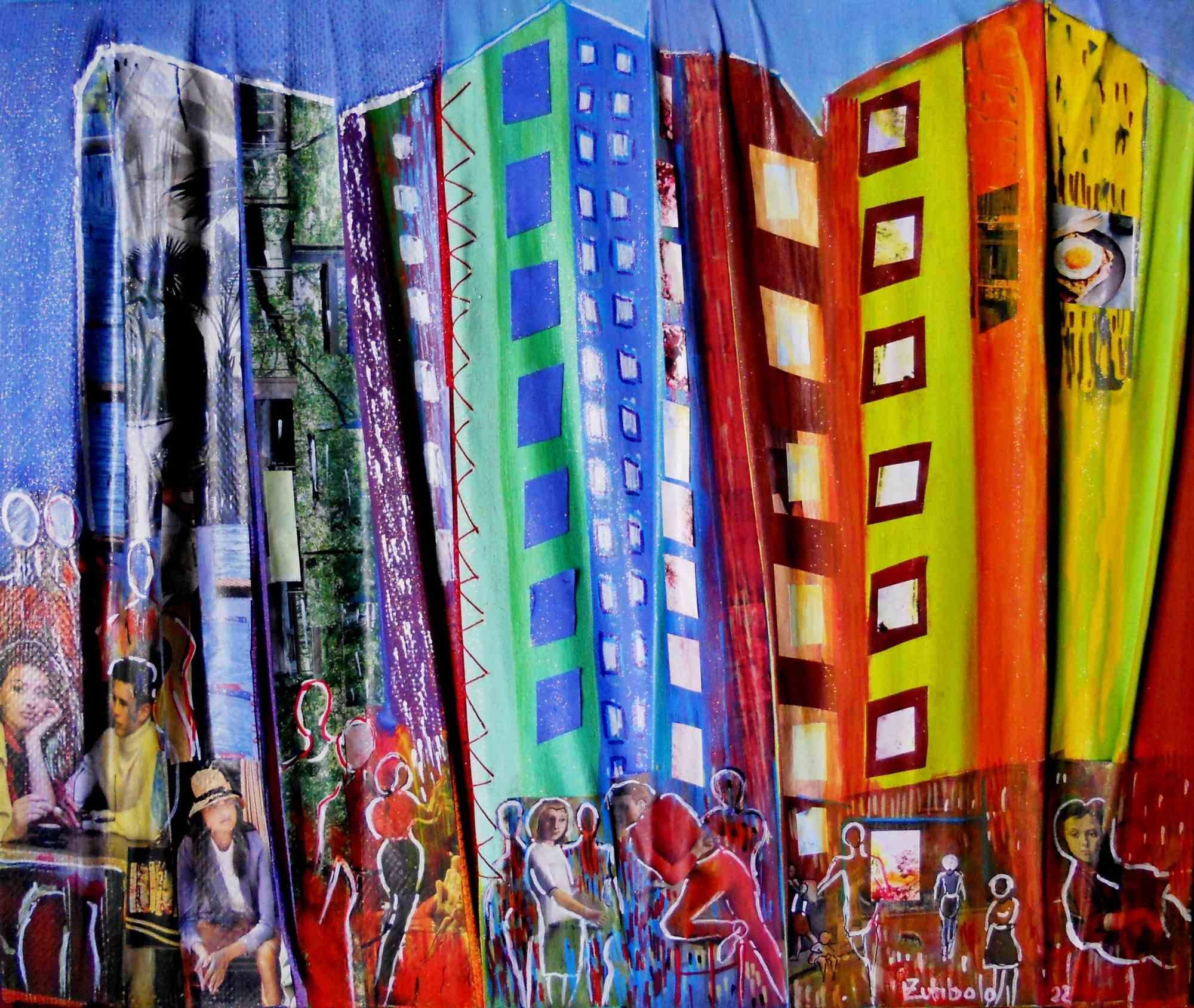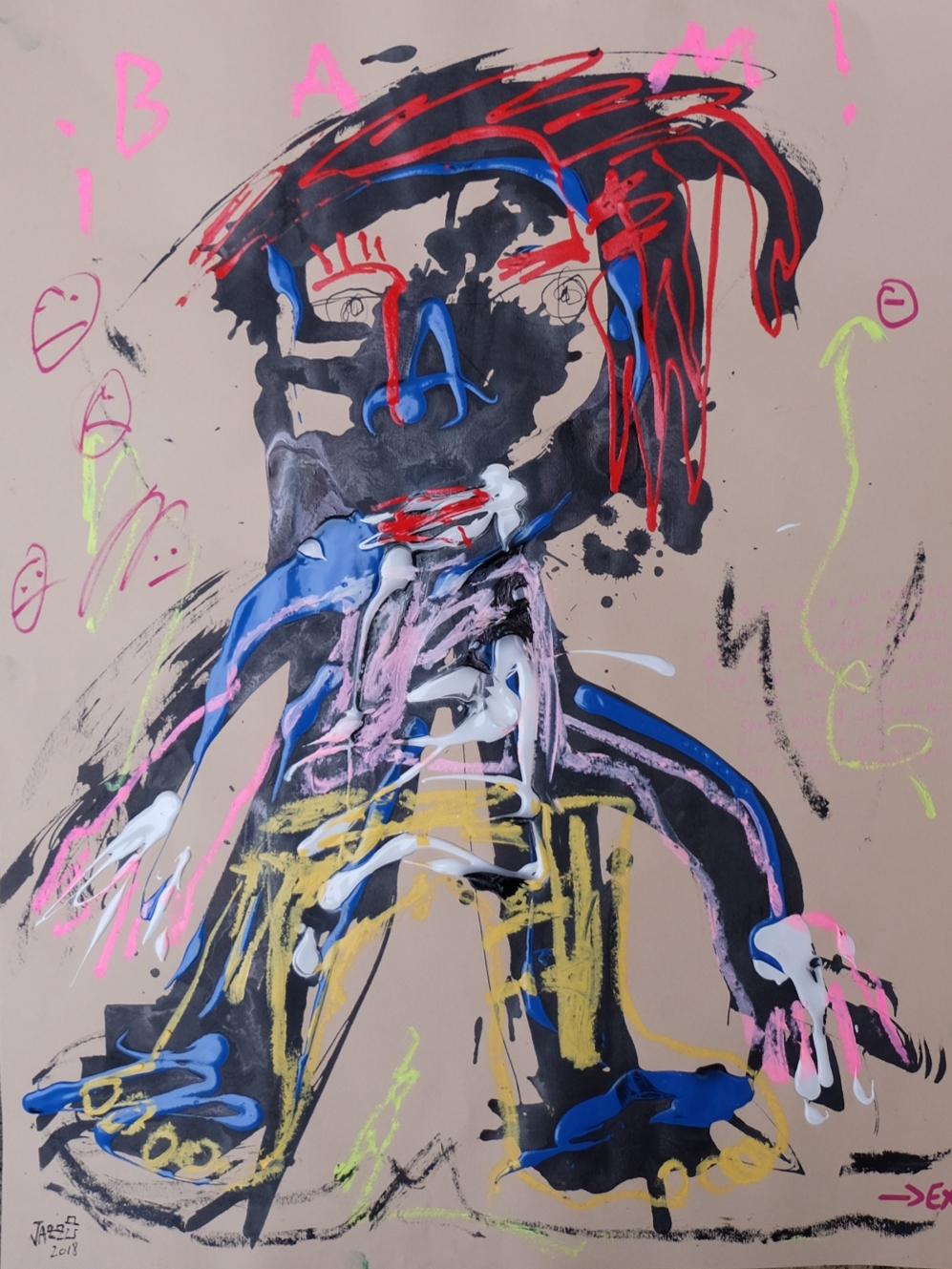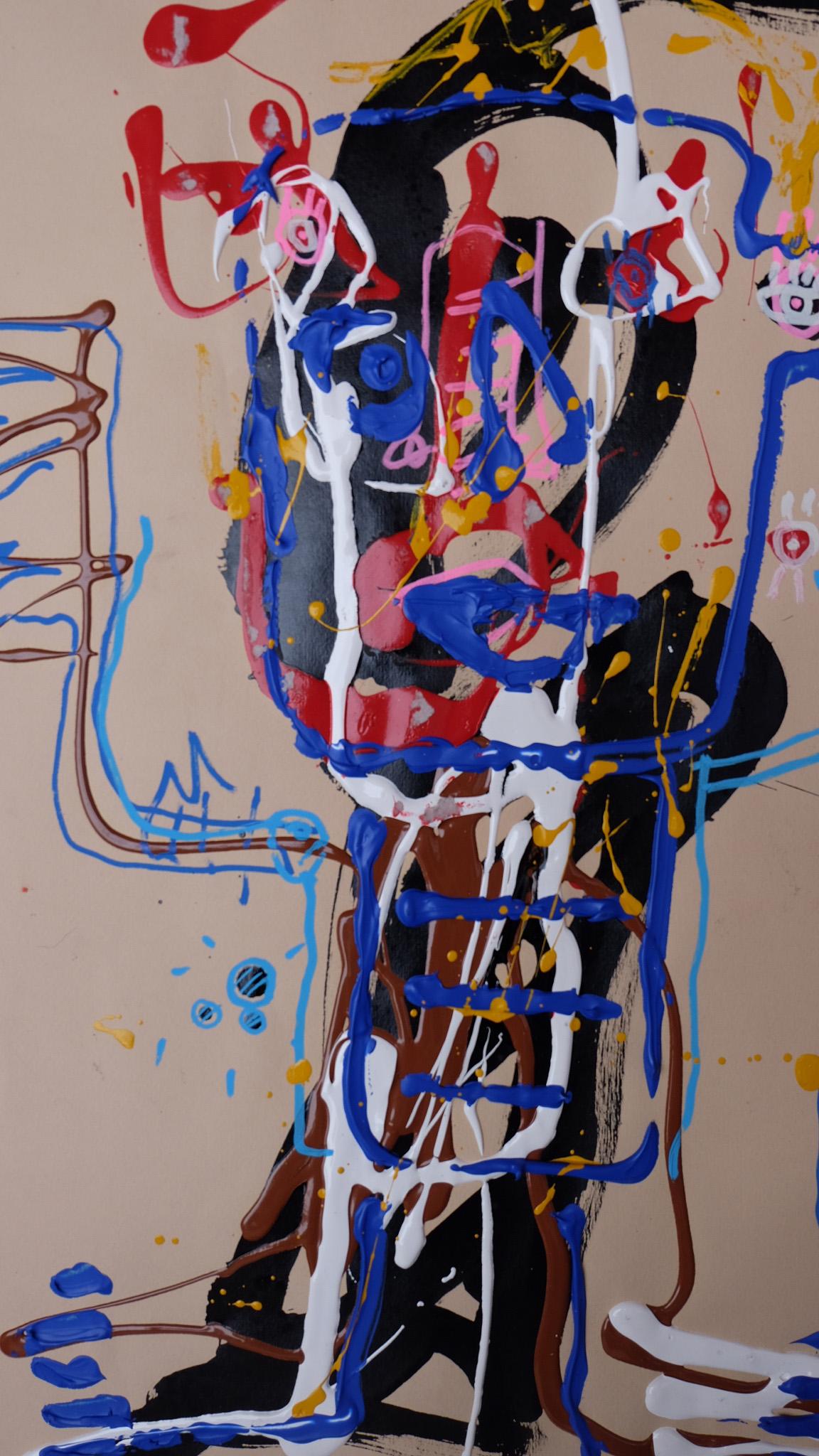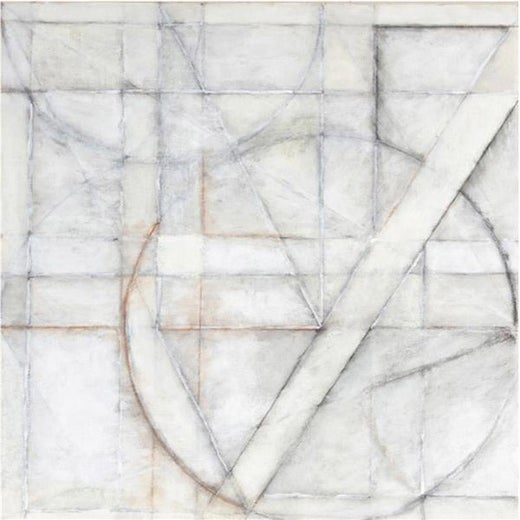Items Similar to Spiral of Time II
Want more images or videos?
Request additional images or videos from the seller
1 of 9
Harry NadlerSpiral of Time II1986
1986
About the Item
Spiral of Time II
Mixed media with acrylic on paper, 1986
Signed lower right (see photo)
Condition: Excellent
Image size: 35 x 15 1/2 inches
Provenance: Peter Marciniak, New Hampshire
Distinguished Midwest Private Collection
Select Exhibition:
1991 Franz Bader Gallery, Washington, D.C. (solo)
1980 Guggenheim Museum, New York, NY
1974 Bertha Schaefer Gallery; New York, NY (solo)
1972 Childe Hassam Purchase Show, National Institute of the Arts and Letters
1971 "The Turkish Bath of Ingres,” Louvre Museum, Paris, France
1971 Guest Artist, Tamarind Institute; Albuquerque, NM
1970 “American Drawings of the Sixties,” New School Art Center; New York, NY
1966 Dorsky Gallery, New York, NY (solo)
1962 Dwan Gallery; Los Angeles, CA (solo)
1959 Dwan Gallery, Los Angeles, CA (solo)
Museum Collection:
Smithsonian American Art Museum
Albuquerque Museum, Albuquerque, NM
Cincinnati Art Museum, Cincinnati, OH
Detroit Institute of Arts, Detroit, MI
Fine Arts Museum, Santa Fe, NM
Guggenheim Museum, New York, NY
University of New Mexico Art Museum, Albuquerque, NM
Oklahoma Art Center, Oklahoma City, OK
Pennsylvania Academy of the Fine Arts, Philadelphia, PA
Storm King Art Center, Mountainville, NY
Wesleyan University, Middletown, CT
Harwood Museum of Art, Taos
"An abstract painter who lived in New York City; Amagansett, Long Island, and Albuquerque, New Mexico, Harry Nadler is described as a "formalist abstract painter of the 1960s-90s whose works were marked by their rich colors, transparencies, and labyrinthine constructions. —The attempt to capture in a purely abstract imagery the quintessential quality of light and contour that emanate from a particular landscape is a hazardous pictorial ambition, but Mr. Nadler has met the challenge of this problem with remarkable success.˜ (Hilton Kramer, The New York Times, April 27, 1974)
Noted Fine Print Publications: Lincoln Center/Fine Art Prints,1990, "Live From Lincoln Center", screen print,edition72
Harry Nadler Biography
DESCRIPTION WITHOUT PLACE
A story Harry told me that he felt was a metaphor for his life and work was about his "golden bird." One day, when he was eight, he was walking home from school, a dangerous task for a Jewish boy in East Los Angeles in the '30s. He carried a painting he had made in school. He had to walk through a dark tunnel and was afraid. His painting of a beautiful, golden bird, radiating tropical colors, shone in the dark and he lost all his fear. The image of beauty, flight, darkness, and the power of his own image-making, stayed with him his whole life.
He discovered a kind of freedom in school; he graduated when he was 16, went to art school, supported himself as an illustrator for a newspaper; then discovered a wide new world of literature and fine arts at the University of California, Los Angeles. He earned a B.A. and an M.A., and his talent as an artist manifested itself in teaching assistantships and in painting awards and early shows. His affinity for European painting was strong, and he yearned to go to New York and immerse himself in the museums and in the current work being done by the abstract expressionists.
Awarded a Fulbright Scholarship to Spain in 1960, Harry fulfilled his dream of traveling to Europe and studying Goya's Disasters of War at the Prado. His commitment to finding a visual language to express his deep ethical concerns began at this time. He produced a series of works dedicated to the victims of the Holocaust and called the Buchenwald Landscapes and exhibited this body of work at the end of his year in Spain. He agonized over it, feeling that the imagery was too literal. He was searching for something--a formal instrument that reached a meaning beyond the obvious horror of the subject matter.
On his return to the United States, he relocated to New York City, believing that his artistic roots lay there. He first made a living by teaching extension courses, while studying great paintings in the city's museums, participating in the current art world and developing his own work.
Between 1961 and 1965, Harry made paintings of strange spaces filled with autobiographical objects. The poetry of Wallace Stevens powerfully affected him especially. For Harry, the activity of painting was a way of connecting separate realities. The work of imagination, metaphor, or "seeming" as Stevens described it, takes place in the gap between disparate elements, making connections of meaning on a deeper level. In this gap, he struggled to formulate with precision his understanding of his tools: his materials, his knowledge of philosophy and art history, his religious tradition, his life experience. In this gap, he lived with the anxiety of knowing, with faith in a process larger than himself. And he worked. Geometry became a way of speaking about ultimate purity, wholeness, relatedness; the sensuous material of paint and the particular way he combined those materials became a way of expressing the quality of his own experience.
He named a painting series Description Without Place, in honor of Stevens. In this series, windows and boxes hold images of experience (painted objects, that both separate and merge the spaces of the painting. He combines images of crucifixion and blackness, with the vitality of life in both object and color. The breaking of edges and boundaries, merging the spatial and the temporal, continued throughout his life.
In 1965, he was offered a teaching position at Wesleyan University in Connecticut. There he began his series, Homage to Ingres, shown in New York City in 1969, followed by a sports series and collages, based on biomorphic forms. At this period, his explorations were about weaving the space and creating the ambiguity of figure and ground.
In 1971, Harry took a job at the University of New Mexico, with the intention of working into a part-time situation and maintaining a house and studio in Amagansett, New York. He continued cutting up images (derived from his Ingres paintings) and made a lithograph based on this work at the Tamarind Institute in Albuquerque. During this period, he also worked on new grid paintings, moving from biomorphic forms to an emphasis on the field of light and space in a more abstract way. He showed his New Mexico paintings in New York City in 1974. These luminous works were followed by very dark paintings using similar imagery.
In 1975, he turned his canvases on the diagonal and began a series of diamond paintings, applying black and white and then gray paint. He was always involved with the mystical Cabalistic symbolism of "white fire/black fire." His imagery became involved in ambiguity between two- and three-dimensional space. In 1976, after spending the summer in Amagansett, he began a new series of diamond paintings called Ocean Rhythms. Searching for the quality of the ocean without representing it literally, he used waves of motion to create that field/space that was his formal concern. In 1977, he continued the same diamond format, but became interested in more symbolic and calligraphic imagery, still attentive to the creation of that flat field. In late 1977-78, he returned to the square format; the imagery became pictographic, and one of his old concerns reemerged: the issue of edges and the center. This was the beginning of the Labyrinth Series. He became more involved in the richness of the surface, and moved into color to create a dark luminosity. At this time, he remarked, in characteristic humor, that the labyrinth was a metaphor for his life; he didn't know where he was going. He showed these works in 1979 in New York City and was much stimulated by the response.
In 1980, his format changed to the vertical and his medium to egg tempera on rice paper stretched onto canvas. This enabled him to layer transparent colors, finding a new way to achieve the luminosity for which he strived. He joined the vertical panels to make triptychs, again in a desire for transcendent feeling. When he came to the end of this series, he suddenly needed to go back to creating color that emerged from the dark. He began a series of large square, dark works, with a labyrinthine field of glowing, colored objects, again indicating an ambiguous two- and three- dimensional feeling, all this painted in thick encaustic.
- Creator:Harry Nadler (1930, American)
- Creation Year:1986
- Dimensions:Height: 35 in (88.9 cm)Width: 15.5 in (39.37 cm)
- Medium:
- Movement & Style:
- Period:
- Condition:
- Gallery Location:Fairlawn, OH
- Reference Number:
Harry Nadler
Nadler was born in 1930 in Los Angeles. He graduated from UCLA with a Masters degree and joined the faculty of Wesleyan University in CT. In 1971, he moved to New Mexico to teach painting at the University of New Mexico, while keeping a home in Amagansett, NY. Nadler died in 1990 in Albuquerque, NM.
About the Seller
5.0
Recognized Seller
These prestigious sellers are industry leaders and represent the highest echelon for item quality and design.
Platinum Seller
These expertly vetted sellers are 1stDibs' most experienced sellers and are rated highest by our customers.
Established in 1978
1stDibs seller since 2013
716 sales on 1stDibs
Typical response time: 1 hour
Associations
International Fine Print Dealers Association
- ShippingRetrieving quote...Ships From: Fairlawn, OH
- Return PolicyA return for this item may be initiated within 10 days of delivery.
More From This SellerView All
- UntitledBy Dennis AshbaughLocated in Fairlawn, OHUntitled (Abstraction) Mixed media on paper, 1980 Signed and dated 1980 lower right (see photo) Condition: Excellent, unframed Sheet size: 31 1/2 x 47 1/2 inches Provenance: Jan Cowl...Category
1980s Abstract Expressionist Abstract Paintings
MaterialsMixed Media
- UntitledBy Dennis AshbaughLocated in Fairlawn, OHUntitled Mixed media on paper, 1981 Signed and dated 1981 lower left (see photo) Provenance: Knoedler Gallery, New York (label) Charles Cowles Gallery, New York The Collection of Jan...Category
1980s Abstract Abstract Paintings
MaterialsMixed Media, Gouache
- untitledBy Dennis AshbaughLocated in Fairlawn, OHUntitled Mixed media on paper, 1979 Signed and dated ‘79 lower right (see photo) Sheet size: 31 1/2 x 48" Frame: 34 1/4 x 50 1/4" Provenance: Members Gallery, Albright-Knox Art Galle...Category
1970s Abstract Abstract Paintings
MaterialsMixed Media, Oil
- UntitledBy Peter MarksLocated in Fairlawn, OHUntitled Acrylic with gold leaf on canvas, metallic foil and glitter paper collage mounted on paper, c. 2003-2004 Unsigned Provenance: Estate of...Category
Early 2000s Abstract Abstract Paintings
MaterialsMixed Media
- Soft Blue DiscsLocated in Fairlawn, OHSoft Blue Discs Acrylic/polymer on masonite, 1976 Signed by the artist in pencil lower right: LD Cantine (see photo) Signed, titled, dated verso (see photo) Canadian painter Cantine has spent his career exploring the role of color in painterly image construction Condition: Excellent Painting size: 12 x 15 inches Provenance: Kraushaar Galleries (lebl, see photo) "David Cantine (born 1939) is a Canadian painter, best known for consistently painting pictures using the same composition for the last forty years of his career. Cantine was born in Jackson, Michigan, and went to school at the University of Iowa, earning a Bachelor of Arts degree in 1962, and a Master of Arts degree in 1964. In 1965 he began teaching drawing and painting at the University of Alberta, until retiring from his position in 1996. Cantine's work in the beginning of his career was figurative art, but he began to experiment with abstraction in the 1970s, and in 1975 became inspired by a photograph of a pair of apples casting round shadows. This compositional structure became the basis for the minimalist, post-painterly abstraction David Cantine is best known for. David Cantine's paintings are in a number of collections, including the Art Gallery of Alberta, the University of Alberta, the Christopher Cutts Gallery, the Francis Winspear Centre for Music, the Alberta Foundation for the Arts, and the Masur Museum of Art." Courtesy Wikipedia "David Cantine’s highly recognizable compositions of coloured circles below Plexiglas have been the painter’s primary pursuit for 45 years of his impressive painting career spanning almost six decades. What originally began as a still-life of apples and their shadows evolved into the present abstract imagery of four circles and seven colours. Motivated by the use of “structural colour instead of descriptive colour,” David Cantine continues to explore variations on this minimalist theme. Since the early 2000s, he has also explored a more painterly form of colourful abstracted still-life, with echoes of inspiration from Giorgio Morandi. Born in Jackson, Michigan, Cantine received his Master of Arts degree from the University of Iowa before permanently relocating to Edmonton, Alberta, Canada. He taught Drawing at the University of Alberta for over thirty years and has been featured multiple times at the Art Gallery of Alberta, in the Alberta Biennial of Contemporary Art, and most recently in Soak, Stripe, Splatter. His work has been exhibited in 24 solo exhibitions and 37 group shows and can also be found in the following collections: Masur Museum, Louisiana; Museum of Contemporary Canadian Art, Ontario; Art Gallery of Alberta; University of Alberta FAB Gallery; Simons; Alberta Art Foundation; Hewlett-Packard; The Sims...Category
1970s Abstract Abstract Paintings
MaterialsAcrylic Polymer
- ChacoBy Virginia DehnLocated in Fairlawn, OHChaco Canvas, fabric, pigment and collage elements, 1985-1995 Signed lower left corner in red paint Title and signed in pencil on the verso on the top of the stretcher Condition: Excellent Canvas size: 18 x 18 inches Provenance: Estate of the Artist By descent Chaco is a Native American culture of Ancestral Puebloan peoples, thriving in New Mexico between 850 CE and 1250 CE. Some of the motifs in this work was inspired by Chaco Canyon wall art. This mixed media work was created after the artist moved from New York to Santa Fe in 1985. It combines many Southwestern and Native American motifs. This is one of a small group of similar works combing collage and mixed media. (See photo of native pictographs) that inspired this work. Virginia Dehn From Wikipedia, the free encyclopedia Virginia Dehn Virginia Dehn in her studio in Santa Fe Virginia Dehn (née Engleman) (October 26, 1922 – July 28, 2005) was an American painter and printmaker. Her work was known for its interpretation of natural themes in almost abstract forms. She exhibited in shows and galleries throughout the U.S. Her paintings are included in many public collections. Life Dehn was born in Nevada, Missouri on October 26, 1922.] Raised in Hamden, Connecticut, she studied at Stephens College in Columbia, Missouri before moving to New York City. She met the artist Adolf Dehn while working at the Art Students League. They married in November 1947. The two artists worked side by side for many years, part of a group of artists who influenced the history of 20th century American art. Their Chelsea brownstone was a place where artists, writers, and intellectuals often gathered. Early career Virginia Dehn studied art at Stephens College in Missouri before continuing her art education at the Traphagen School of Design, and, later, the Art Students League, both located in New York City. In the mid-1940s while working at the Associated American Artists gallery, she met lithographer and watercolorist Adolf Dehn. Adolf was older than Virginia, and he already enjoyed a successful career as an artist. The two were married in 1947 in a private ceremony at Virginia's parents house in Wallingford, Connecticut. Virginia and Adolf Dehn The Dehns lived in a Chelsea brownstone on West 21st Street where they worked side by side. They often hosted gatherings of other influential artists and intellectuals of the 20th century. Among their closest friends were sculptor Federico Castellón and his wife Hilda; writer Sidney Alexander and his wife Frances; artists Sally and Milton Avery; Ferol and Bill Smith, also an artist; and Lily and Georges Schreiber, an artist and writer. Bob Steed and his wife Gittel, an anthropologist, were also good friends of the Dehns. According to friend Gretchen Marple Pracht, "Virginia was a glamorous and sophisticated hostess who welcomed visitors to their home and always invited a diverse crowd of guests..." Despite their active social life, the two were disciplined artists, working at their easels nearly daily and taking Saturdays to visit galleries and view new work. The Dehns made annual trips to France to work on lithographs at the Atelier Desjobert in Paris. Virginia used a bamboo pen to draw directly on the stone for her lithographs, which often depicted trees or still lifes. The Dehns' other travels included visits to Key West, Colorado, Mexico, and countries such as Greece, Haiti, Afghanistan, and India. Dehn's style of art differend greatly from that of her husband, though the two sometimes exhibited together. A friend of the couple remarked, "Adolf paints landscapes; Virginia paints inscapes." Virginia Dehn generally painted an interior vision based on her feelings for a subject, rather than a literal rendition of it.] Many of her paintings consist of several layers, with earlier layers showing through. She found inspiration in the Abstract Expressionism movement that dominated the New York and Paris art scenes in the 1950s. Some of her favorite artists included Adolf Gottileb, Rothko, William Baziotes, Pomodoro, and Antonio Tapies. Dehn most often worked with bold, vibrant colors in large formats. Her subjects were not literal, but intuitive. She learned new techniques of lithography from her husband Adolf, and did her own prints. Texture was very important to her in her work. Her art was influenced by a variety of sources. In the late 1960s she came across a book that included photographs of organic patterns of life as revealed under a microscope. These images inspired her to change the direction of some of her paintings. Other influences on Dehn's art came from ancient and traditional arts of various cultures throughout the world, including Persian miniatures, illuminated manuscripts, Dutch still life painting, Asian art, ancient Egyptian artifacts...Category
1980s Abstract Abstract Paintings
MaterialsOil
You May Also Like
- "Golden Steed" Abstract Painting 28" x 39" in by Ibrahim KhatabBy Ibrahim KhatabLocated in Culver City, CA"Golden Steed" Abstract Painting 28" x 39" in by Ibrahim Khatab Ibrahim Khatab was born in Cairo 1984, works as a co-teacher in Cairo University, he mixes between painting, video ar...Category
21st Century and Contemporary Abstract Abstract Paintings
MaterialsWood, Mixed Media, Acrylic
- "Abstract Calligraphy" Abstract Painting 98" x 79" inch by Ibrahim KhatabBy Ibrahim KhatabLocated in Culver City, CA"Abstract Calligraphy" Mixed Media Painting 98" x 79" inch by Ibrahim Khatab Ibrahim Khatab was born in Cairo 1984, works as a co-teacher in Cairo Uni...Category
21st Century and Contemporary Abstract Abstract Paintings
MaterialsCanvas, Wood, Mixed Media, Acrylic
- Through the Streets of the City - Painting by Giuseppe Zumbolo - 2022Located in Roma, ITThrough the streets of the city is one of the best works of the artist Giuseppe Zumbolo. It is made on canvas painted in mixed technique, in 2022, Th...Category
2010s Abstract Abstract Paintings
MaterialsMixed Media
- A 822 - Oversized Big Canvas Artwork Large Blue Original Abstract PaintingBy Marco SchmidliLocated in Los Angeles, CASwiss born artist Marco Schmidli creates minimalist paintings with a contemporary edge. Placing emphasis on process, he lets the mediums naturally manifest within his artwork. “An important aspect of my artwork is the removal of my own artistic hand. Instead of controlling and demanding the paint move and act a certain way, I let the paint naturally manifest and express its pure form/ true colors/ most natural movement.” Schmidli's work is known for its sensitive surfaces and subtle textures. He has developed specialized techniques for applying and layering color, giving depth to his paintings. This 64 inch high by 90 inch wide original artwork...Category
21st Century and Contemporary Abstract Abstract Paintings
MaterialsCanvas, Mixed Media, Acrylic
- EMOTIF VIBy JazzuLocated in Saint Ouen, FREMOTIF VI - 2018 Jazzu 65x50 cms Acrylic and aerosol can on 180g canson paper Unique work signed by the artist With certificate of the artist Price: 600 euros Jazzu is the signature...Category
2010s Abstract Abstract Paintings
MaterialsMixed Media
- EMOTIF IIIBy JazzuLocated in Saint Ouen, FREMOTIF III- 2018 Jazzu 65x50 cms Acrylic and aerosol can on 180g canson paper Unique work signed by the artist With certificate of the artist Price: 600 euros Jazzu is the signature...Category
2010s Abstract Abstract Paintings
MaterialsMixed Media
Recently Viewed
View AllMore Ways To Browse
Lost Time
Time Square
World War Ii American
World War Ii France
Spiral Vintage
Oklahoma Art
Spiral Light
Harry Day Art
Vintage Sports Paintings
Diamond Painting Vintage
Abstract Sports Art
Harry Day Paintings
Large Vertical Abstract Print
Horror Paintings
Square Painting 15x15
Vintage Taos Painting
Disasters Of War
Vintage King Los Angeles
